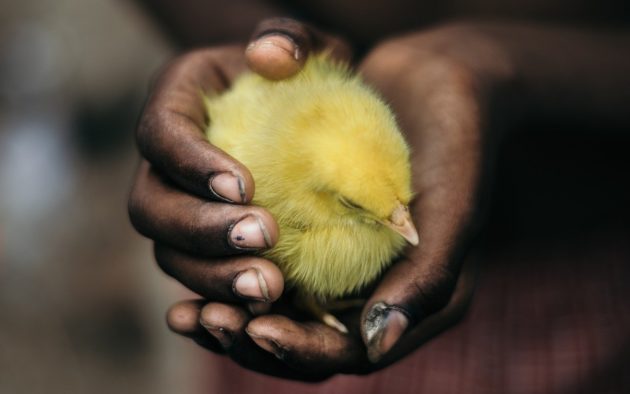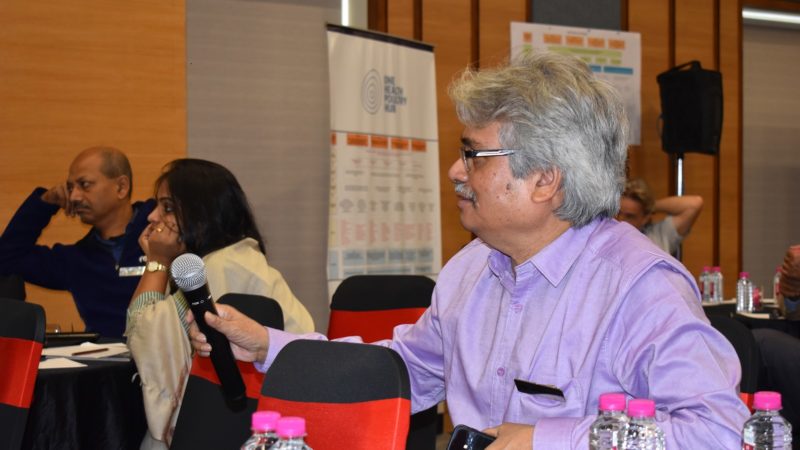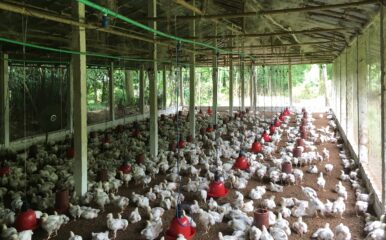
Why we needed a more inclusive definition of One Health
Published on 17/01/2022

aamiraimer/Pixabay
The new One Health High Level Expert Panel (OHHELP) was constituted at the end of last year by the Food and Agriculture Organization (FAO), the World Health Organization (WHO), the World Organisation for Animal Health (OIE) and the United Nations Environment Programme (UNEP). As one of its first tasks, the OHHLEP has redefined the concept of One Health. The following is an interview with Professor Nitish Debnath, long-time One Health champion, chair of One Health Bangladesh and OHHELP member, to find out more about this redefinition and how it connects with work of the One Health Poultry Hub.
read the new definition in full (pdf)
Q. How does the new definition for One Health support the One Health Poultry Hub’s current understanding of One Health?

Professor Nitish: First, this new definition provides a solid basis to support a common understanding among the OHHLEP’s panel members and its partner organisations and it’s very inclusive. Second, the new definition embodies the significance of ‘safe and nutritious food’ and sustainable development for the One Health approach and that goes very well with Hub’s understanding of One Health. Third, when people talk about One Health, they mostly focus on human and animal health. Ecosystems and socioeconomic conditions have not been properly reflected and taken into consideration. So, I believe this definition will give a stronger, broader understanding of basic principles and implementation approaches.
“Real change begins at community level”
Q. The new definition specifically mentions mobilising communities in addition to mobilising sectors and disciplines. Why is this important and how does it relate to the work of the Hub?
Professor Nitish: Real change begins at community level and the impact of One Health practices all finally make themselves known at community level. Biosecure farming practices, appropriate use of antimicrobials, maintaining the integrity of ecosystems and the guidance or management practices of these can start at community level for reducing health threats to humans, animal and ecosystem.
The One Health Poultry Hub also puts emphasis on community engagement to reduce health threats to humans, poultry and the environment. The interdependendencies and interconnectednesses of humans, animals and ecosystems need to be understood by community people so they can take appropriate health measures at the interface of these domains. These connections need to be incorporated in awareness campaigns and public health education.
In the poultry value chain studies of the Hub, researchers consider the different points (nodes) of high disease risk and these have community health implications. Therefore community mobilisation for the implementation of the One Health approach is pivotal.
The Poultry Hub aims to emphasise training and educating producers about evidence-based outcomes. We need to build goods communication with our communities, and that is what the Hub is doing. We not only collect data and information from the community regarding poultry production but also provide them with advice in areas such as biosecurity, waste management, antibiotic usage, etc. That is how mobilisation works. The more the communication at community level, the easier the risk governance at grassroots level which is about practice, rather than at policy level where it is more like desk work.
Q. Previous definitions have often referred only to animals rather than ‘wild and domestic animals’. How is this new distinction helpful for understanding the Hub’s work?
Professor Nitish: Studies have established that more than 70% of emerging infectious diseases (EIDs) are from wild animals. So the mention of wild animals in the definition reflects the specific significance of the wildlife-domestic animal-human interface. In the case of highly pathogenic avian influenza (HPAI), migratory wild birds may play an important role in spillover to domestic ducks and chickens and then on to humans. For the complete picture of HPAI spillover, the wild bird-domestic bird-human interface is very important and must be explored.
“Many of the world’s emerging public health issues are connected to the integrity of ecosystems.”
Q. There seems to be greater emphasis on ‘ecosystems’, rather than on ‘environment’, than in previous definitions. What might lie behind this and what is its relevance for the Hub?
Professor Nitish: Traditionally, environmental health refers to occupational public health issues and there is no or minimal reference to ecosystem health. However, many of the world’s emerging public health issues are connected to the integrity of ecosystems, including the emergence of new pathogens. The term ecosystem also covers the co-existence of all species and maintaining that equilibrium is a part of the One Health approach. It connects too with abiotic sources such as water, energy and air which are included in the new definition, rather than only focusing on specific occupational health hazards.
So, ‘environment’ can’t embrace all the interactions and interconnectedness that One Health should consider. Taking antimicrobial resistance (AMR) as an example, antimicrobial residues can be found in the environment through waste from domestic birds and then, via environmental contamination, they can be found in other parts of the ecosystem.
Regarding poultry production too, the total ecosystem must be considered. For example, the crow can be a medium of infection in poultry production management and it is a part of the ecosystem but the relationship between the crow and infection can’t be expressed clearly by the word environment.
Q. How can a new One Health definition support the endeavour for safer poultry production and distribution?
Professor Nitish: The Hub is all about ensuring a safer production and distribution cycle so we can consume healthy food. The new definition is very related to our goal. Previously we said that maintaining human, animal and environmental health is all about One Health but you can’t demonstrate safer production and distribution patterns using that definition. In the Poultry Hub we recognise the various value chains and different nodes where One Health interventions can be effective. The greater inclusiveness of the new definition is helpful.
“Transdisciplinary research is crucial to effective implementation of a One Health approach on the ground.”

Q. How does the One Health definition help in promoting inter-and transdisciplinary research and knowledge?
Professor Nitish: We need to recognise that host-pathogen-environmental interactions and political, legal and social dynamics are complex, and that understanding those dynamics through transdisciplinary research is crucial to effective implementation of a One Health approach on the ground. Aligning political, sectoral, organisational and broader social commitments will lead to more successful implementation and better enable us to address other challenges such as biodiversity loss, energy, climate change, food and water security, and social inequalities.
The One Health concept promotes transdisciplinary research and knowledge sharing. Research and education is not all about theories and definitions! We need interventions, and modifications of these by sharing evidence-based knowledge among our future professionals. The One Health concept allows for that space of inter-professional education. The Hub is doing an excellent job in this regard. Previously it was felt that only veterinary professionals can undertake poultry-related work. Now people from public health, social sciences and human medicine are undertaking surveillance in live bird markets with veterinarians. The Hub can also create an amazing sharing space among young researchers by demonstrating their evidence and outcomes. Bangladesh One Health Young Voice platform can also take a lead in this area.
Q. Aside from avian influenza, which other diseases also have the potential to create havoc in the near future?
Professor Nitish: As the poultry production industry grows and intensifies there may be other micro-organisms we need to focus on, for example E. coli, Campylobacter, etc. And we can’t ignore the AMR issue. We need a stronger surveillance system and surveillance facility to prevent these hazardous micro-organisms in the production chain emerging. There is also infectious bronchitis ( IB), a coronavirus in poultry. This is a very stable virus and we haven’t found any notifiable zoonotic potentiality from it so far, but that doesn’t mean that we will not see another coronavirus in poultry emerging that has zoonotic potential.
“What we need is a well-established preparedness plan.”
Q. How can One Health best move forward in Bangladesh in 2022?
Professor Nitish: Obviously, we are concerned about the next pandemic. We do not know when and how it will occur. We must prepare now for any next pandemic and we want to dedicate 2022 to that, based on the One Health concept. We can’t ignore avian influenza. Scientific evidence shows this notorious virus has pandemic potential .
Day by day, intensification in the poultry industry is rising across Bangladesh and so therefore does the introduction of a potential pandemic pathway The more interactions there are, the more the risk. We can’t say there won’t be another novel type strain of the influenza virus, so, what we need is a well-established preparedness plan – and I mean, in our country, Bangladesh’s 3rd Avian and Pandemic Influenza Preparedness and Response Plan.
The past plan was very bookish. I believe the findings, the data, the evidence contributed by the Hub, and the BALZAC research project before that, are helping to produce a more practical, relevant, and useful plan for Bangladesh in future.


